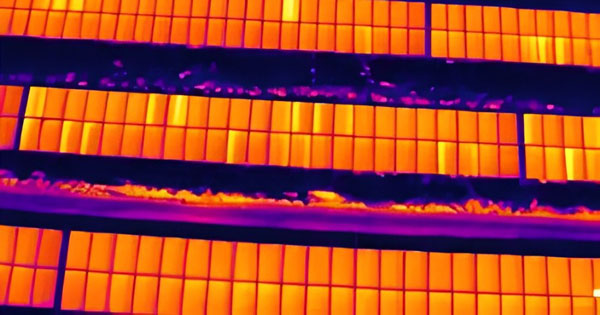What is the impact of thermal defects on PV plant's power generation?

The PV module is the core unit responsible for generating electrical energy in a PV plant, converting solar radiation into electricity. When an abnormality affects the module’s conversion efficiency, less solar radiation is transformed into electrical energy. According to the principle of energy conservation, the lost energy is converted into excess heat, leading to what is known as a thermal defect. In other words, thermal defects directly impact a PV system’s power generation. Based on extensive practical experience and in-depth knowledge of PV modules, thermal defects can be categorized into twelve types, classified by their causes and corresponding treatment methods.
| NO. | Thermal defect name | Impact of module power | Remark |
|---|---|---|---|
| 1 | Modules in open circuit | 100% | The module does not generate power |
| 2 | Modules in short circuit | 100% | The module does not generate power |
| 3 | Broken front glass | 15.47% (rough estimate) | Apply the upper limit of the hot spot power degradation |
| 4 | Substring in short circuit | 33.33% | 1/3 module does not generate power |
| 5 | One substring in open circuit | 33.33% | 1/3 module does not generate power |
| 6 | Two substring in open circuit | 66.66% | 2/3 module does not generate power |
| 7 | Single cell with difference in temperature | 8.15% (average) | Research indicates hot spot influence range on power: 0.83%~15.47% |
| 8 | Module with cells shaded | 8.15% (average) | Research indicates hot spot influence range on power: 0.83%~15.47% |
| 9 | Bird dropping or dust | 8.15% (average) | Research indicates hot spot influence range on power: 0.83%~15.47% |
| 10 | Transfer resistance at cell connections | 0.83% (rough estimate) | Apply the lower limit of the hot spot power degradation |
| 11 | Heated JB | 0.83% (rough estimate) | Apply the lower limit of the hot spot power degradation |
| 12 | PID | 50% (average) | Research indicates PID influence range on power: 30%~70% |
The table above also provides estimates of the impact of thermal defects on PV module power output, based on relevant research. For instance, the effect of hotspots on module power ranges from approximately 0.83% to 15.47%, while the impact of Potential-Induced Degradation (PID) can vary significantly, ranging from 30% to 70%.
The above calculation does not account for the series and parallel connection effects of PV modules, making it a relatively conservative estimate of power generation losses. In reality, any abnormal module can impact the performance of others in the same series. For instance, a module with broken glass may not only develop hotspots but also reduce the current of the entire string. Additionally, it may lead to inverter shutdowns due to insulation resistance issues, further expanding the scope of power generation losses. Over time, the impact worsens, affecting system efficiency on a larger scale. Therefore, early detection and timely intervention in thermal defects are crucial to minimizing power losses and ensuring stable system operation.